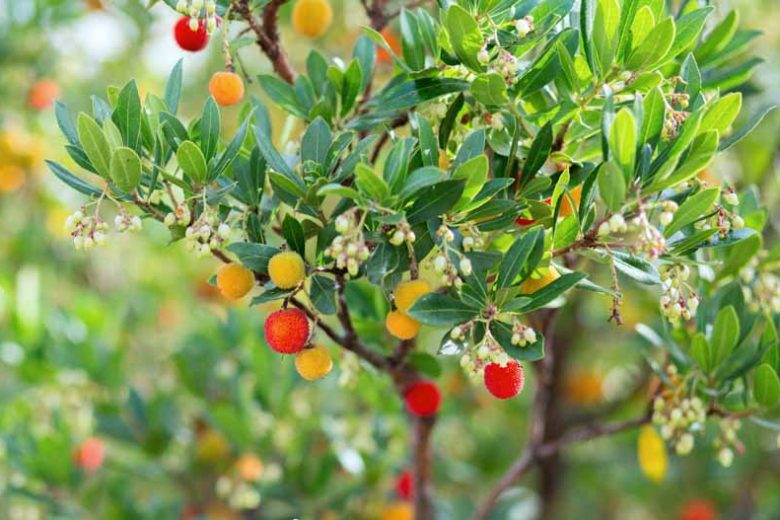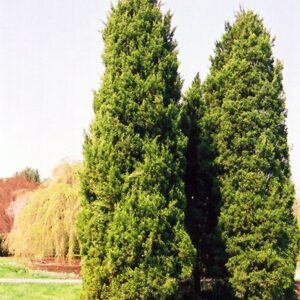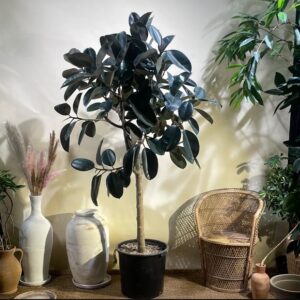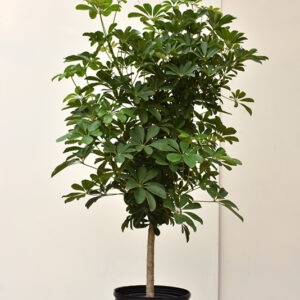Description
Strawberry Tree – (Arbutus unedo) 1 Yr Old Seedling
Overview
The Strawberry Tree (Arbutus unedo) is a stunning evergreen ornamental tree prized for its unique combination of attractive bark, glossy foliage, and vibrant red fruit. Native to Mediterranean regions, this versatile tree grows well in temperate climates, making it an excellent choice for gardens, patios, and landscaping. The edible fruit resembles strawberries and is great for preserves or fresh snacking. With its ability to flower and fruit simultaneously, the Strawberry Tree offers year-round visual appeal and benefits for wildlife. This 1-year-old seedling is a perfect addition to your collection of ornamental or edible plants.
Strawberry Tree Native Range
Arbutus unedo is native to the Mediterranean region and parts of Western Europe but is also widely cultivated in temperate climates worldwide due to its hardiness and aesthetic appeal.
Growth and Form
- Height/Spread: Grows up to 15–30 feet tall with a similar spread, depending on pruning and growing conditions.
- Growth Rate: Moderate; achieves a compact, bushy form in its early years.
- Foliage: Glossy, dark green leaves with serrated edges offer year-round greenery.
- Bark: Reddish-brown bark that peels away to reveal smooth, lighter-colored wood, adding ornamental interest.
- Flowers: Bell-shaped white or pale pink flowers bloom in fall and early winter, attracting pollinators.
- Fruit: Round, red-orange fruits resembling strawberries mature in late fall, with a sweet, mildly tangy flavor.
Ecological Benefits
- Wildlife Habitat: Flowers attract bees and other pollinators, while the fruit is a favorite of birds and small mammals.
- Soil Enrichment: As an evergreen tree, fallen leaves enrich the soil with organic matter.
- Erosion Control: Deep roots stabilize soil, making it suitable for slopes and erosion-prone areas.
Strawberry Tree Hardiness and Climate Tolerance
- Hardiness Zones: 7–10, suited for mild climates but can tolerate occasional frost.
- Cold Tolerance: Withstands light frost but may require protection in colder zones.
- Drought Tolerance: Thrives in well-drained soils and is drought-tolerant once established.
- Sunlight: Prefers full sun but tolerates partial shade.
Strawberry Tree Planting and Care
- Planting Location: Ideal for sunny, sheltered spots with well-drained soil. Suitable for containers or as a standalone tree.
- Watering: Water regularly during the first year. Once established, the tree requires minimal watering.
- Pruning: Prune lightly to shape or control size in late winter or early spring. Avoid heavy pruning, as it can affect flowering and fruiting.
- Fertilization: Apply a balanced fertilizer in spring to support healthy growth and flowering.
Uses
- Ornamental: The Strawberry Tree is a favorite in landscaping for its year-round beauty, with eye-catching bark, flowers, and fruit.
- Culinary: Edible fruits are used in jams, jellies, and liqueurs or eaten fresh.
- Wildlife: Provides food and shelter for birds, bees, and other pollinators.
- Container Gardening: Compact growth makes it suitable for patios or small gardens.
Potential Challenges
- Fruit Drop: Fallen fruits may create some mess if planted near walkways.
- Cold Sensitivity: Protect young trees from hard frost in cooler climates.
- Slow Fruiting: Trees may take several years to produce significant fruit.






Reviews
There are no reviews yet.